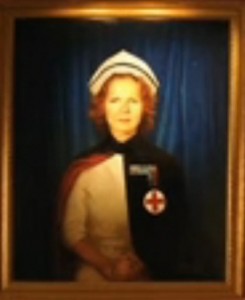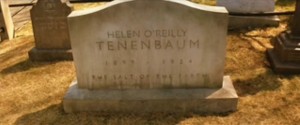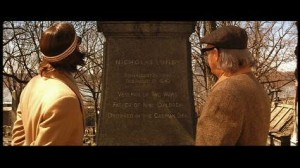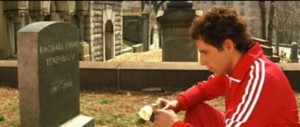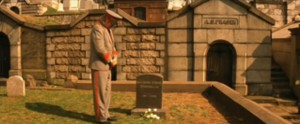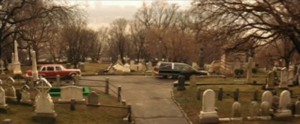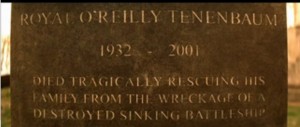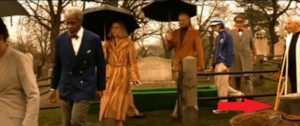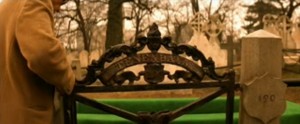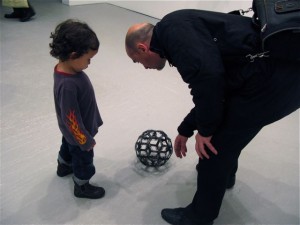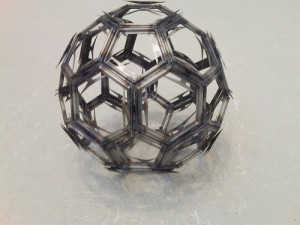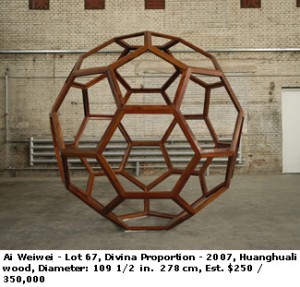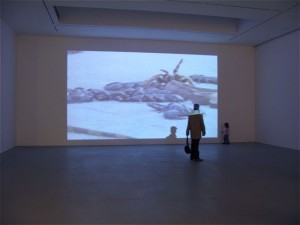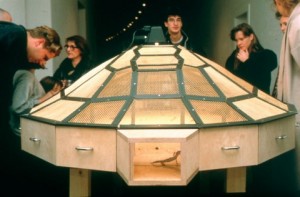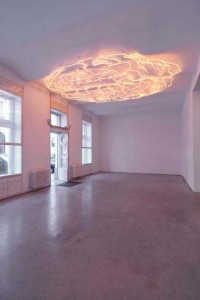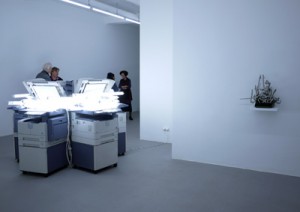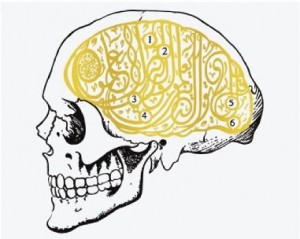For the sake of learning from old mistakes and also some selfsupport, I printed out all my old presentations, papers, and everything that either went on print or got a mark or feedback of some sort.
I was quite astonished I only wrote 8 papers- with 7 papers in 3 years (2009-2012)- and held at least 20 presentations in 6 years (2006-2012). Per annum, that makes about 1 paper and 3 presentations starting from 2006 where I began my studies.
What also astonished me is that I always thought my strenght really were the presentations. But most of those (including the handouts) were awful, most PPP were made last-minute in the night before, and from my point of view as of today, really not convincing although I remember I put a lot of effort in preparations.
My typical presentation took about a month of preparation where I would read something on topic nearly every day for 2 weeks because I was so excited about it. Then I paused for a week where I did nothing but surfing on facebook, having a bad conscience and pondering about the questions I stumbled upon in my research. A few days before I had to hold the presentation, my bad conscience became almost unbearable and I was procrastinating like a maniac. Only one or two days left to Day X, I did the handout- when I managed that, I was feeling like the best prepared student in the world. Sometimes I did not even manage to do that but did the PPP and the handout in one rush.
The PPP I almost exclusively did the night before, in a nightshift. I remember being tired during almost all my presentation, and often did not sleep at all. Sometimes I had a „break through moment“ just that night, which pushed me further and made me feel I my reasearch was fruitful and the work payed off. I also was super excited every time, and eager to present my results. I also remember I often had the feeling nobody else found the topic I talked about as exciting as I did, and maybe even the professor did not get my point. My presentation marks, at least the ones I remember, weren’t really perfect. Sometimes I got the best mark, but often enough, it was average or even below. Often, was extremely disappointed when the show was finally over and I was alone again.
Nevertheless, during all the years, I was convinced my strenght really were those presentations and talking in front of others. I took every chance I had, and I was very positive until the moment it was over.
Now I realize, that this is not true and the image of myself I created and believed in was quite wrong. I do see progress in my presentation work, although it is quite little and the „input stress/output feedback“ bill really never payed off in my favor. The only good thing I have to say is that I realized even back in middle school that group work wasn’t my cuppa so I avoided that completely whenever possible- with only less a handful of exceptions which all failed miserably.
When taking a look at my papers, on the other hand, a complete different picture appears. I took my time before I started writing stuff down and hand it in- I was incredibly insecure and ashamed of my work from the very first day, and I also started off with a bad experience. So, I studied for about three years until I finally decided I had to start writing papers or else I’ll never get a grade. I also felt confident enough to give it a try.
My very first paper in 2006 was de jure not a paper. It was just a few pages describing a work of art I had to do for one of the basic courses in Euro-American Art History. The task was to describe a picture the prof gave to us. I felt I could easily do that because in art class back in school, I got straight A’s and nothing else, so I wasn’t afraid and just started writing like I used to do in school. I got a below-average mark and my selfconscience was shattered. When I read it now, it’s kinda ridicolous and of course, not scientific at all. The prof was super nice and calmly explained to me her critic and gave me tips on how to improve. I remember the talk was quite long, and when I went home, I was extremely disappointed of myself. I also feared that this below-average mark would destroy my hope for a very good bachelor degree in the end, since every mark counts in. This led to my fear of handing in papers, I guess.
After that, three years later, I took a course on Japanese Woodcut Printing focussing on prints of Kabuki actors (those are called yakusha-e). The prof said she wanted to gather a little brochure on the Kabuki Juhachiban („18 Grand Plays of Kabuki theatre“) and thus, we were each given one of those 18. I remember I did not have any clue about the Juhachiban or Kabuki at all at that point, and merely picked Kan U because I kinda liked the sound. The prof said to me, “ Oh, watch out, this is the most difficult one to gather information because it’s the most unusual one- do you still want to take that one?“- so I guess she touched my weak spot being my pride, and I insisted on taking Kan U. The task was to write a one-pager, just giving a quick overview about the play, main theme, figure and providing one randomly chosen yakusha-e of that Juhachiban play. So again, this was technically not a paper. I worked 6 months on the paper, and it turned out 14 pages. My prof did not refuse it and was quite thrilled. She praised me and I got the best mark. The brochure never went on print or something, but there is that little free-to-copy folder now sitting in our library in the handset section.
I did 6 pages for a book and my first article in print after that, while at the same time re-gaining trust in my own work and self again. For several times, I proved to myself: I could do better than below-average! I still feel proud about everything I did after that very first blooper, because I am convinced I can work scientifically and I also enjoy it, and I don’t think there is any point in hiding those facts. So I guess you could say I really shyed away from taking the task of handing in a standard paper, and still was very, very insecure.
My very first standart paper then came finally in 2010. This is mere 3 years ago! It was 14 pages (apprendix and tables +5 pages), and I did it for a course I took one year before I handed in the paper. You could say my research took half a year, or maybe a year if you count the time I took the course in. The prof was the same as the one where I handed in the one about Kan U, and I considered it safe play since she was already convinced I did good work before I even wrote down the first word. The paper was touching the yakusha-e subject again, but this time, I focussed on the tiny censor’s seals. She said I should give a general overview on the subject and write something like a wiki article, kinda sorting the information I gathered and just putting it down in one place for good. I thought this might not be enough. I remember I struggled quite a lot and put endless hours in research. Not only I xeroxed all the metres of book I gathered to collect it in a huge folder, but I also dragged that huge folder with me when I went on vacation with my boyfriend to Egypt. So I sat there on the sundeck of a cruising boat in Egypt, surrounded by opportunities for leisure, reading in that folder, cursing probably all the authors I read and also myself. But not enough- since I booked vacations long ago, and did not manage to finish all in Egypt, I again took that (now quite colourful and newly organized) folder a second time with me when I went off for a second holiday a few weeks later, to the UK. Luckily, I was visiting friends of my parents, where my dad’s old friend became a writer/journalist of some sort. So the family was probably used to the war I fought with myself, and quiet people angrily staring at screens and typing in the living-room. Since I was provided with fresh air, a dog, lush green english meadows around to stroll in, and plenty of milk-tea, the anger soon vanished and I felt very productive. During the week I stayed, I managed to finish my paper early with even some time left for real vacation. I did a very good job, got a very good mark, and I can still read that paper without shame, heck, I even used it to check a few things later since I provided useful tables which made dating the seals real easy. More than that, I had a „beak-through“ moment and made some remarks that I would still consider genuine scientific work. Again, I really did accomplish something.
Coming to a conclusion, the effort I took for my papers did pay off well, but I (still) do not see that. Although I was and still am proud of the results- I always felt very ashamed about all my papers, for several reasons.
- I still don’t think I write well enough, or got a special talent for writing. I tend to shift styles. Writing it down merely a tool for sharing my ideas with others, at least that’s what I think. It just happens to be the only one where I more likely can develop a point of view, build up an argumentation, and sometimes even get it through to others.
- It always was such a struggle, with me sweating blood and ink, from the moment I said, „yeah I’m gonna write about that, that is so awesome“ to the moment I finally hand it in.
- It takes me a long time to get to a point where I think the paper is „ready and worthy“ to hand it in.
- Also, I never worked less than 6 months (except the very first try) on one paper. This is such a long time! I’m so slow!
- I never handed in a paper in time. I feel and felt ashamed about that. I feel like a traitor to others, since I still got excellent marks.
- When I compare my work flow to other students (yeah I know I shouldn’t but what can I do, the profs are also encouraging that competition, which I hate), I feel awkward and slow.
- Even though I (and some profs) know my papers are exceptionally good, I feel that I cannot share my papers or even my work in progress with other students. I stand out, thus I am alone. When others read my work, they either alienated me because they were envious or because they thought I was a crazy-obsessed nerd-bitch, or maybe both.
- My point of argumentation is often somewhat… new, or at least unusual. I often disagree with the „common“ point of view on a subject. I fear others might disagree and/or cannot intelectually follow my argumentation. I work hard on making all my argumentations bulletproof, but this still won’t protect me from trolling, envy, and blunt stupidity.
Put all those points together, and what have you got? The hermit. It’s all about feedback, I guess. The presentations weren’t as good as my papers, but at least I got some kind of instant reaction, so I felt pretty good about that. I also had the feeling I could work with the remarks, like it really helped me improving (when in reality, it never really did). Whereas with the papers, it was all me. I could only „talk“ with my books, and those books won’t give me any support or points to work with. I also knew the moment I sent the paper to the prof: „well, again an exceptionally good paper, yawn…“. Because I already knew my arguments were bulletproof, I worked hard on crosschecking every statement, I put a lot of work into detail, I tried making the paper layout beautiful and easy to read, and before I was not 200% satiesfied, I would just not hand in that paper– so the moment I did know it was ready to hand in, everything below very good was just not to be expected. The presentations on the other hand, were always a rollercoaster-ride, I never knew what kind of reaction I would get. Secretly, I might have enjoyed that thrill.
For the future,
- I should learn how to further enjoy the quiet work alone, and how to genuinely praise myself before I hand in that paper: I want to work on how to be proud of my hard work and not only be proud of the result that hard work is producing.
- I should stop putting myself down for working slow, because it obviously does not matter in the long run. It’s perfect I’m doing something, and I don’t want to see myself in a race for grades. This is about improving myself, not grades. I’m working fine the way I do. I’m successful on long-term projects.
- I also should accept I am 100% introvert, no matter how much I act and try to convince myself from other. It’s just no use fighting myself, and I should focus on working how to improve my real strenghts.
